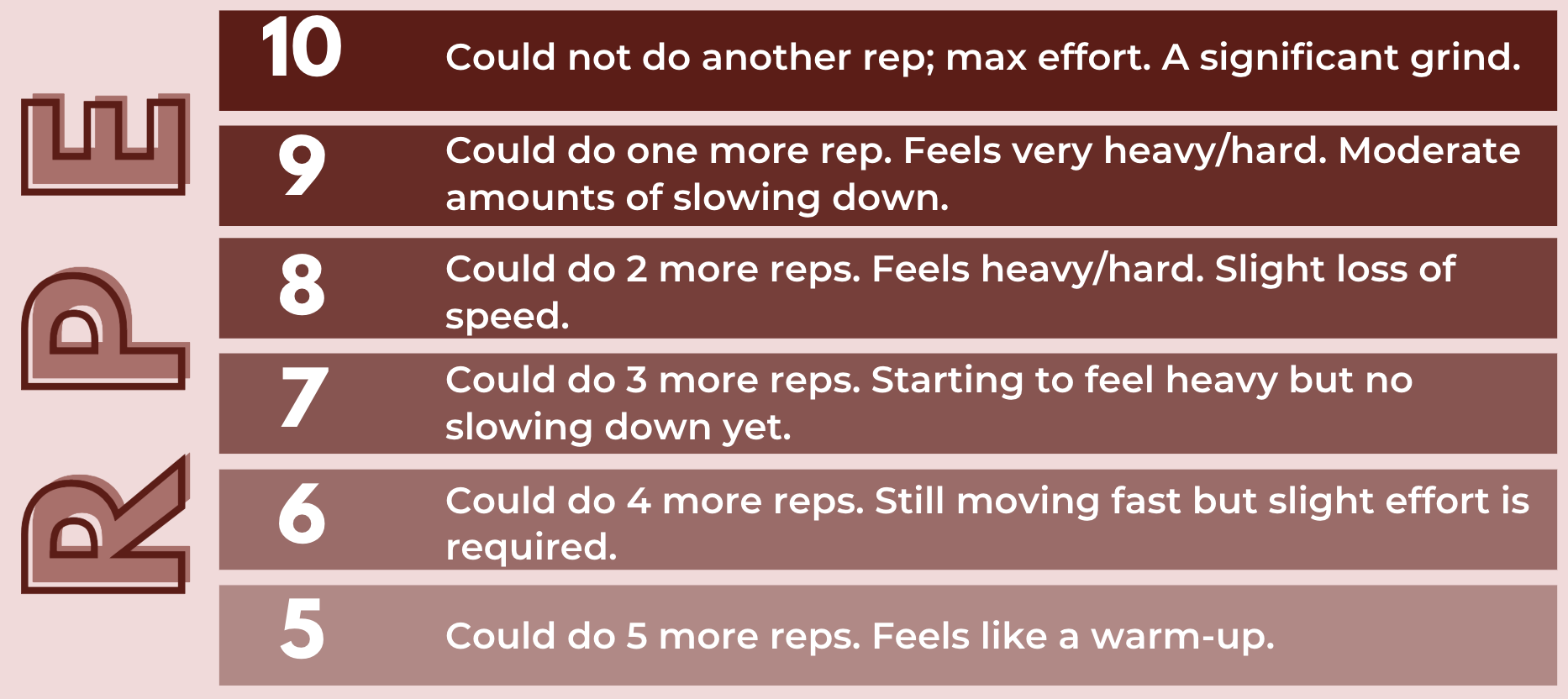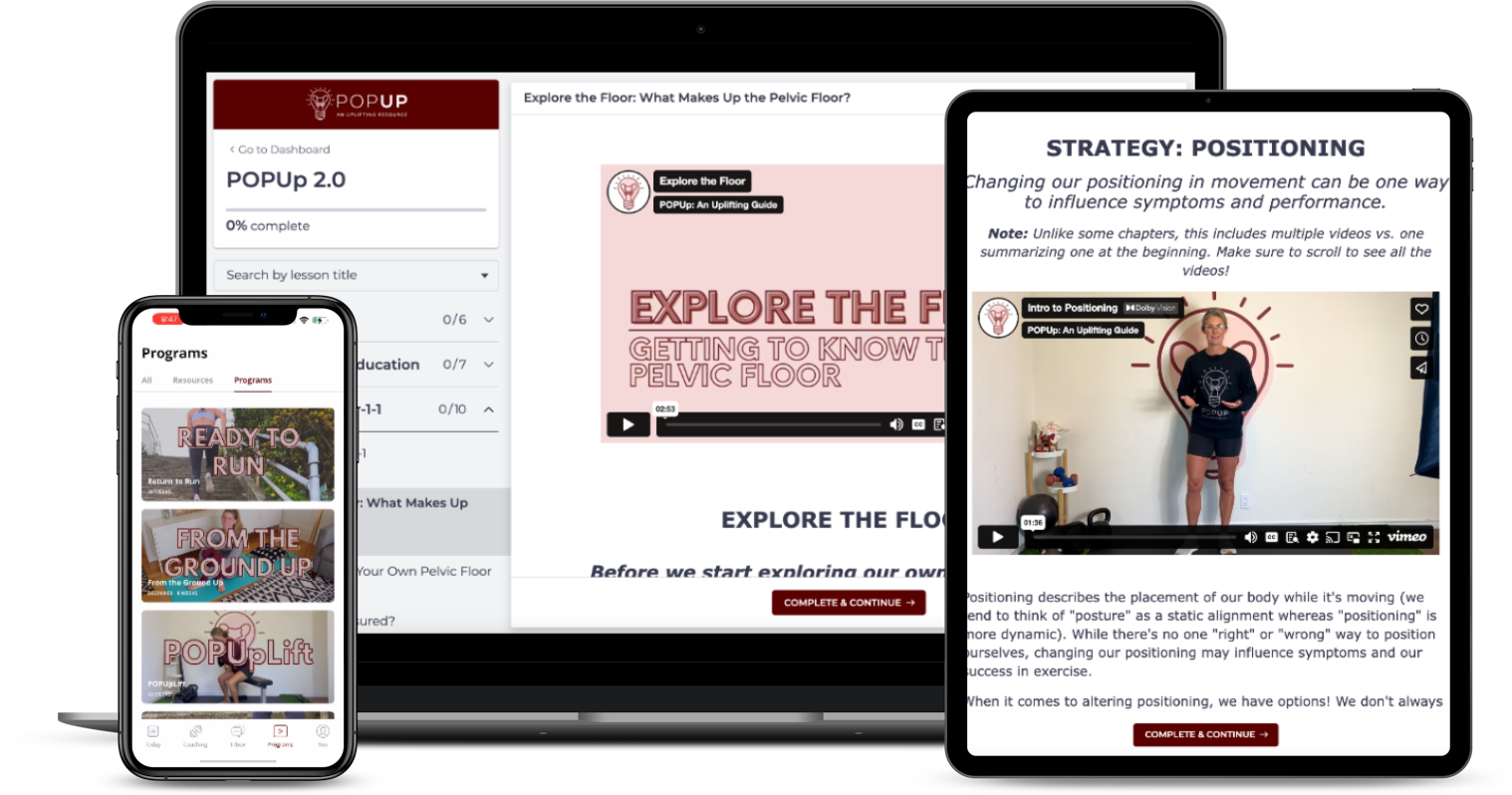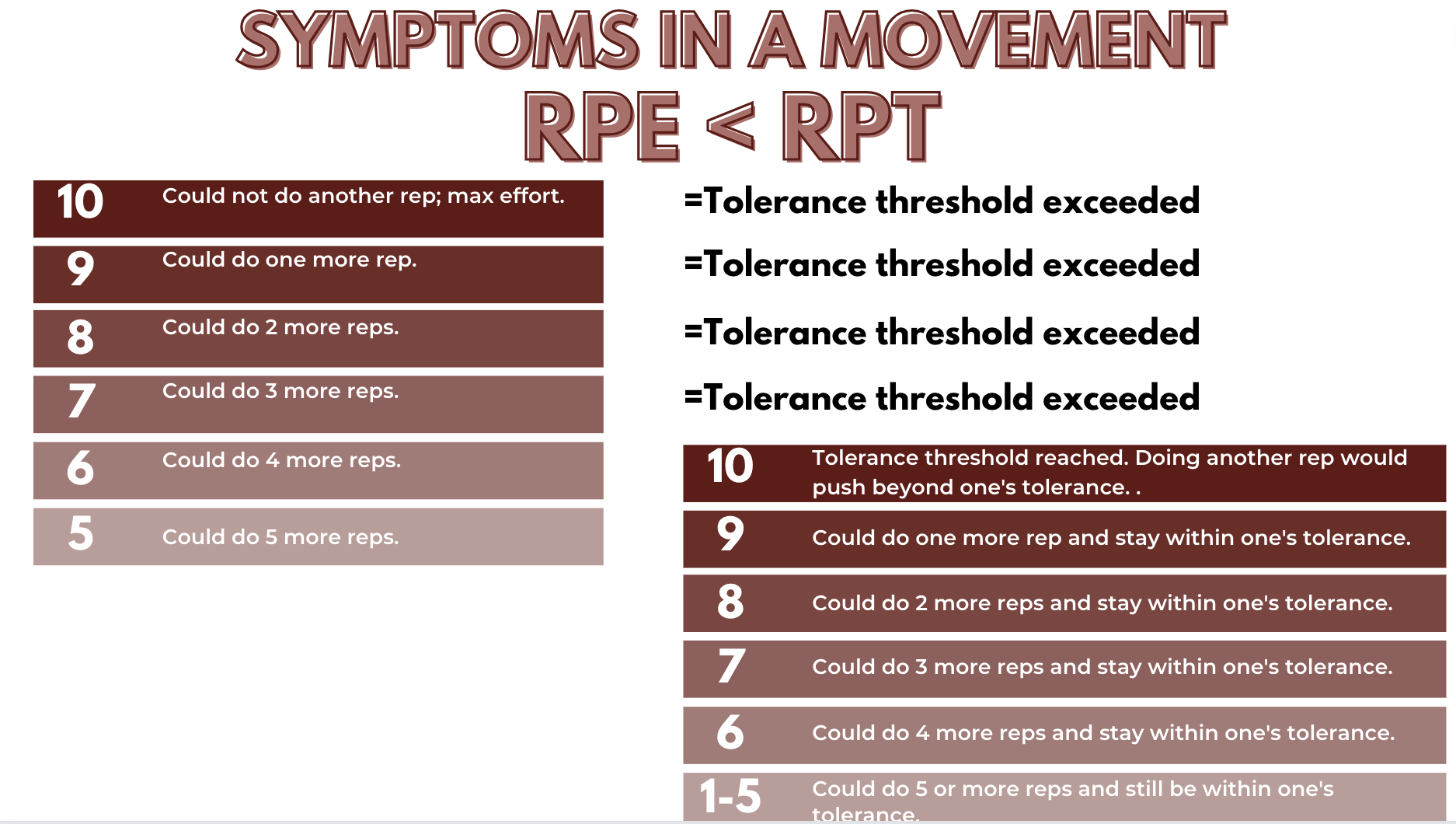How hard should you be working in your resistance training?
When it comes to getting the results we want from our exercise, it’s not just what we do but how we do and how much of it we do that matters!
One critical component that everyone with POP who is engaging in resistance training should consider is intensity.
Intensity refers to how difficult a movement is. It's often expressed in terms of the amount of weight being used in an exercise (although that's not the only way we can consider it). Intensity matters because a stimulus that is too easy will not elicit adaptations (we won't get stronger, faster, etc.) and a stimulus that is too hard can be very difficult to recover from (and may increase injury or discomfort risk).
Note: Volume refers to how much work you do and it's usually expressed in repetitions (reps) and sets (or a duration of time). That’s important, too, but we’re gonna keep the focus on intensity for now!
Commonly, issues with symptoms during exercise and movement are assumed to be due to "poor form", or incorrect breathing/positioning, some kind of "dysfunction" in the body, or the idea that the movement just isn't "POP safe" when they often could be very simply described as issues with intensity and volume. Often, it's just a matter of too much too soon! Or, in the case of someone who has been exercising for a while and hasn't been seeing the results they're looking for, it might be that we’re not working at a high enough intensity! We want to get the dosage right!
Have you encountered this before: you do a new exercise (let's say squats), or maybe lift a little bit more than you're used to, and you feel super symptomatic and frustrated? You might assume it's the exercise itself or that you performed it "wrong". You might decide that squats aren't safe and are to blame. What's likely happening here is often simply too much intensity, too much volume, or a combination of the two. Our bodies can adapt and there's no such thing as a "wrong" movement; but there is such a thing as movement in the wrong dose for right now! Yes, other strategy (breath, positioning, tension) and technique (stance, balance of weight, etc.) considerations could factor in, but we can’t override too much intensity!
Having appropriate "dosage" of exercise (intensity and volume) will ensure that your workouts and life endeavors are appropriate for where you are right now, and where you want to be.
There are several ways that are used to quantify intensity. Some programs will tell individuals to go until they can't do anymore (referred to as "failure"), some programs might use language like "it should be hard, but not too hard!", some will use a percentage of a person's one rep max. While these options aren't necessarily wrong or bad, we are going to use a different way:
RPE
RPE stands for Rate of Perceived Exertion and while there are several versions of RPE, here's what we're going to be using:
RPE is a 1-10 scale with 10 being the most difficult. Instead of just saying 10 is "OMG THAT WAS SO HARD", we're going to use a little more objectivity in defining the scale. RPE will describe our proximity to failure. That is, how many more reps could you have done in the current set until you could not do anymore (failure)? The fancy way of articulating this is we are using "reps in reserve" to describe RPE (but don't worry about being fancy, just stay with us!).
Let's say you are doing a set of 8 squats.
At the end of the 8 squats, we ask you: "if I told you to keep going, how many more reps could you do until you could not do any more?"
Your answer would represent an RPE number. If you said you could not do another rep, that would be an RPE 10 (often written @10). If you said you thought you could do 1 more rep, that would be an RPE 9 (or @9). If you said you could 2 more reps, that would be an RPE 8 (or @8) and so on. Typically, if you could do 5 or more reps, we would just refer to that as a warm up set. RPE is difficult to gauge when the proximity to failure is greater.
Implementing RPE is a skill that takes time to get used to!
It's a lot to learn right off the bat but as you use it more, you'll get the hang of it.
Let's practice right now! Go ahead and perform 10 reps of any exercise (could be squats, calf raises, push ups, Kegels, anything!). At the end of that set, ask yourself "how many more reps could I have done?" And then figure out how you would communicate that via RPE.
We can use RPE to describe movement and exercise ("picking up the stroller was an RPE 10 effort today") and we will also use it when delivering exercise programming. You'll see something like this:
3 sets of 8 squats @7 (that means at RPE 7)
That means: you'll do 3 sets of squats. Each set will be with a weight that allows you to complete 8 repetitions and still feel like you could have done 3 more reps at the end of that set.
That brings us to an important point: the RPE prescription of the workout is one of the most important variables! It's way more important to observe the prescribed RPE than try to increase your weights just because you "feel like you should be lifting more".
Most of the training we implement in our exercise programs will involve the bulk of the work occurring in the RPE 6-8 range. This represents an intensity that is challenging enough to elicit adaptations but not so challenging that we can't recover. This is a good range of intensity for most resistance training, by the way, not just our programs!
By the way! Did you know we have an education and exercise platform designed for people with POP who want to be informed and active? With one monthly subscription, you get access to education (like this blog) and 7 different exercise programs to choose from!
Velocity of the movement (how fast we're moving) can give us some clues around our RPE if we're really lost or unsure. With RPEs up to about 7, we don't expect to see any loss in velocity over the duration of a set. So, if you can do 10 squats and the 10th one looks just as speedy as the first, you're likely at an RPE 7 or below. With RPE 8, we'll see a slight loss of speed. RPE 9 will have a loss of speed and starts to look like a grind. RPE 10 is very slow, may even stop!
Why are we asking you to learn what might seem kinda complicated right now? Because using RPE is one way we can implement something called autoregulation. Autoregulation is a training system that means you select and adjust the training stimulus based on your daily performance during a particular training session/day. Research shows us that our strength and fatigue vary daily based on several factors (sleep, stress, nutrition, previous training, etc.). Because of this, our performance changes from day to day. Your workout yesterday might be too hard for you today (or not hard enough!).
Autoregulation:
Increased performance compared to fixed loading programs
Helps us make the training stimulus appropriate for where we are that day
May help reduce risk of injury by allowing you to better manage training load
Make training more sustainable by lessening likelihood of burnout
Decreases your attachment to training numbers and increases your understanding of your body and its normal performance fluctuations
Makes it so that you can always do the prescribed workout (it just might have different load/volume)
We feel that incorporating autoregulation into not only your workouts but also how you think about movement outside of your workouts is a huge game changer for those with POP!
But what do you do if you could do more reps, but symptoms prevent you from being able to?
Great question! This comes up a lot. We can be really strong in a movement but also notice symptoms at light loads/low volumes below what we could do (if symptoms weren't a factor). Let's say you're doing a set of 8 squats. The weight feels fine, your legs could keep going (you're well below RPE 5) but your symptoms are beyond your tolerance.
This is where RPT, or Rate of Perceived Tolerance, comes into play. RPT is an awesome idea from Barbell Rehab that gives us a way to describe how tolerable exercise feels at a given load. We think this idea is so helpful for those of us with POP! If you did a set of squats and you weren't able to do more reps at the end of the set because you had reached muscular failure (the set felt heavy), then that's our RPE 10. But if you did a set of squats and you weren't able to continue because you reached your symptom tolerance threshold, that's an RPT 10.
When we aren't experiencing bothersome symptoms, RPE and RPT will be equivalent.
When we are experiencing bothersome symptoms, RPT will be greater than RPE.
What is tolerance?
We understand that we won't always be symptom-free (and we don't need to be to continue moving!). Your symptom tolerance is the range of symptoms that are manageable for you. In general, we aim to stay within a window of tolerance (image on the left) rather than exceeding your comfort and tolerance (image on the right). Your tolerance will be subjective to you and may change from day to day.
When experiencing symptoms that prevent you from going to the prescribed RPE in a movement, go ahead and swap RPE for RPT. Instead of "RPE 8 (meaning you could do 2 more reps until failure)" it becomes "RPT 8 (meaning you could do 2 more reps until you reach your symptom threshold/exceed your symptom tolerance).
As we build capacity and desensitize from bothersome symptoms, it's likely that RPE and RPT will become (more) equivalent over time.
Don't stress about getting RPE/RPT "perfectly" and instead aim to use this framework to help build your awareness of how hard you're working (or how close you are to reaching your symptom threshold). Applying RPE/RPT is a skill that will improve in accuracy over time! For now, the best thing to do is to practice. Whenever you're doing a set of exercise, get in the habit of asking yourself "how many more reps could I have done until failure/until I exceed my symptom tolerance?").
We use RPE in our exercise programming but you can start playing around with this concept in your other workouts, too!
Speaking of our exercise programming, did you know that we have an education and exercise platform designed specifically for people with POP? With our exercise app, you’ll be able to access 7 different programs that are geared towards increasing strength, function, and improving confidence in moving with POP? We use RPE in all of them so that you can make sure to be working at the appropriate intensity for your symptoms and and level of fitness.
You can read more about the program by clicking here!







